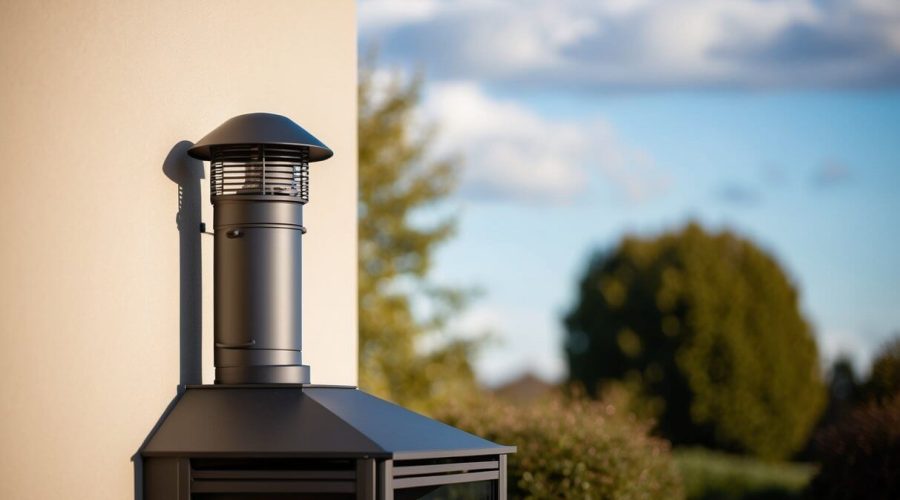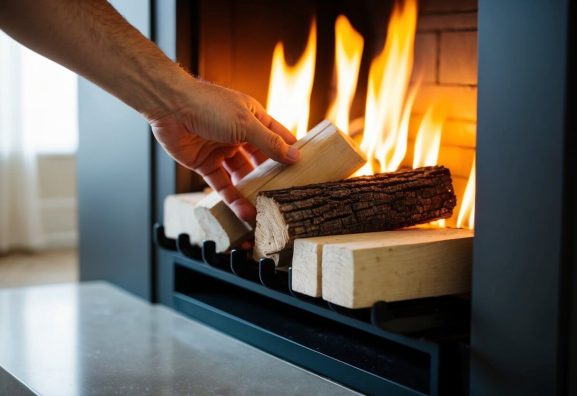Where Is the Gas Fireplace Flue Located?
Gas fireplaces are popular for their efficiency and convenience, but understanding their components is crucial for safe operation. The gas fireplace flue is typically located at the back or top of the unit, designed to vent combustion byproducts outside the home. Proper ventilation is essential for maintaining air quality and preventing dangerous gas build-up, such as carbon monoxide, which can occur if the flue is blocked or improperly used.
Installation of a gas fireplace involves adhering to specific building codes to ensure adequate ventilation. Direct vent models may feature a flue that runs directly outside, while traditional natural vent setups use existing chimney systems. Regular inspection and maintenance of the flue are necessary to prevent hazards and ensure optimal fireplace efficiency.
Understanding the location and function of the gas fireplace flue promotes safety and enhances performance. Homeowners should familiarize themselves with this key feature to enjoy their fireplaces responsibly and effectively.
Key Takeaways
- The gas fireplace flue vents harmful gases outside the home.
- Proper installation ensures effective ventilation and safety.
- Regular maintenance is essential for efficient performance and safety.
Understanding the Gas Fireplace Flue

A gas fireplace flue plays a crucial role in venting combustion byproducts safely from the home. Knowing the different types, components, and how these systems function is essential for efficient and safe operation.
Types of Gas Fireplace Flues
Gas fireplace flues primarily fall into three categories: natural vent, direct vent, and ventless.
- Natural Vent systems use a chimney that relies on the natural updraft to expel gases. They draw combustion air from the room.
- Direct Vent flues expel gases through a sealed system and pull outside air for combustion. This is ideal for modern homes with tighter seals.
- Ventless fireplaces do not have a flue system. They utilize advanced technology to burn gas cleanly, but may raise indoor air quality concerns.
Each type serves specific needs based on installation site and user preference.
Components of a Fireplace Flue System
A typical gas fireplace flue system consists of several crucial components:
- Chimney: The outer structure housing the flue, ensuring safety and stability.
- Flue Liner: A protective lining that prevents heat transfer to surrounding materials.
- Termination Cap: Installed at the top of the chimney to prevent water entry and animal intrusion.
Proper maintenance of these components is essential for effective ventilation and safety. Neglect can lead to blockages or fire hazards.
How a Gas Fireplace Flue Works
When a gas fireplace operates, it ignites gas to create a flame. This process generates combustion byproducts like smoke, carbon dioxide, and water vapor.
In natural vent systems, hot gases rise, creating a draft that pulls fresh air into the fireplace. In contrast, direct vent systems work by using fans to enhance gas flow and air intake, maximizing efficiency.
Ventless models, while convenient, require careful monitoring of indoor air quality to prevent excessive buildup of harmful gases. Regular inspection of the flue helps ensure it is clear of debris and functioning correctly, allowing for safe operation.
Installation and Building Requirements
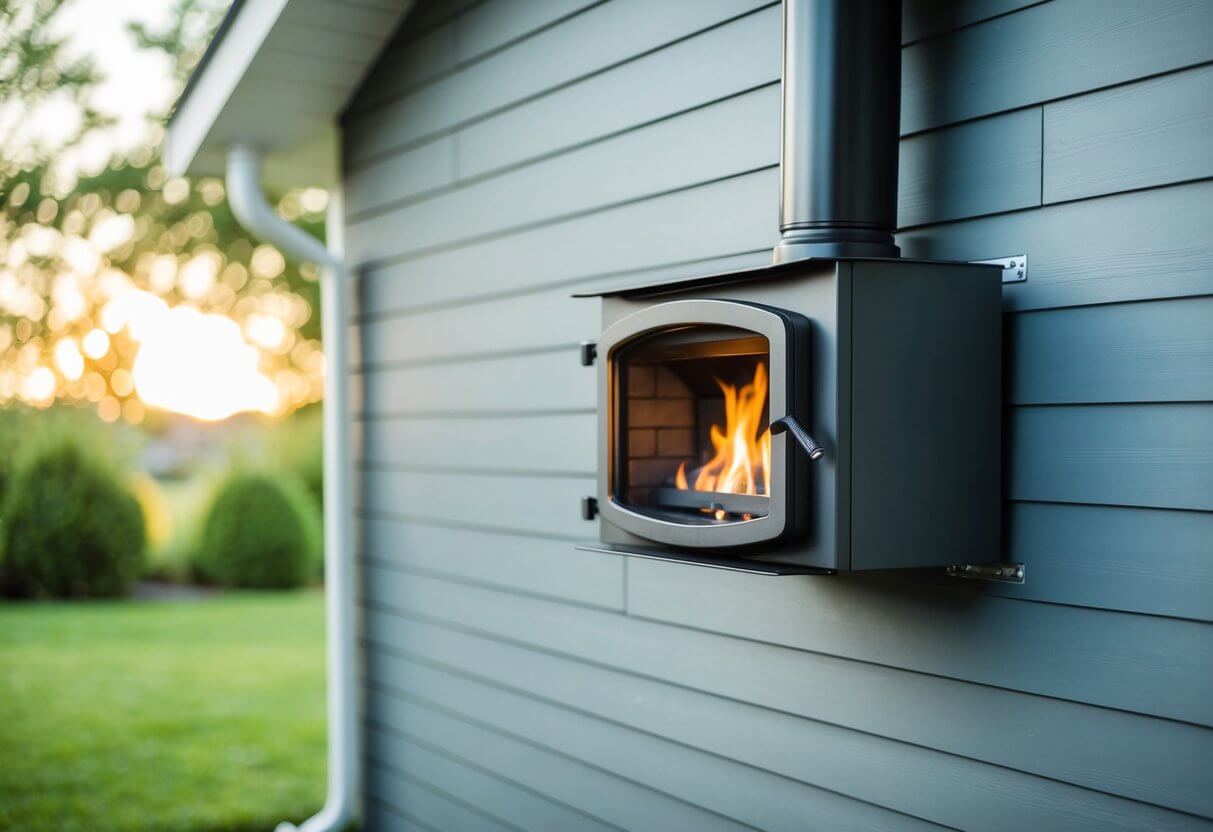
Installing a gas fireplace involves critical guidelines that ensure safety and compliance with local regulations. Understanding the necessary building codes and professional installation standards is essential for a successful setup.
Professional Installation Guidelines
Hiring a certified professional for gas fireplace installation is crucial. Their expertise ensures the gas line and firebox are connected correctly and safely. This prevents potential leaks and fire hazards.
Key Installation Steps:
- Site Assessment: Evaluate the installation location for proper ventilation access.
- Gas Line Installation: Ensure a dedicated gas line meets local codes.
- Flue Installation: For vented models, the chimney flue must comply with established guidelines to channel exhaust gases outdoors.
The installation cost can vary significantly based on these factors, including labor and material expenses.
Building Codes and Standards
Local building codes heavily influence gas fireplace installation requirements. These codes define specifications related to flue liners, chimney configurations, and overall safety standards.
Common Regulations Include:
- Flue Liner Standards: Clay or metal liners must be installed per ASTM specifications.
- Chimney Height: The chimney needs to extend adequately above surrounding structures to avoid backdrafts and ensure proper venting.
Regular inspections may also be required to maintain compliance with safety regulations. Understanding these guidelines helps homeowners avoid significant risks associated with improper installation.
Safety and Ventilation
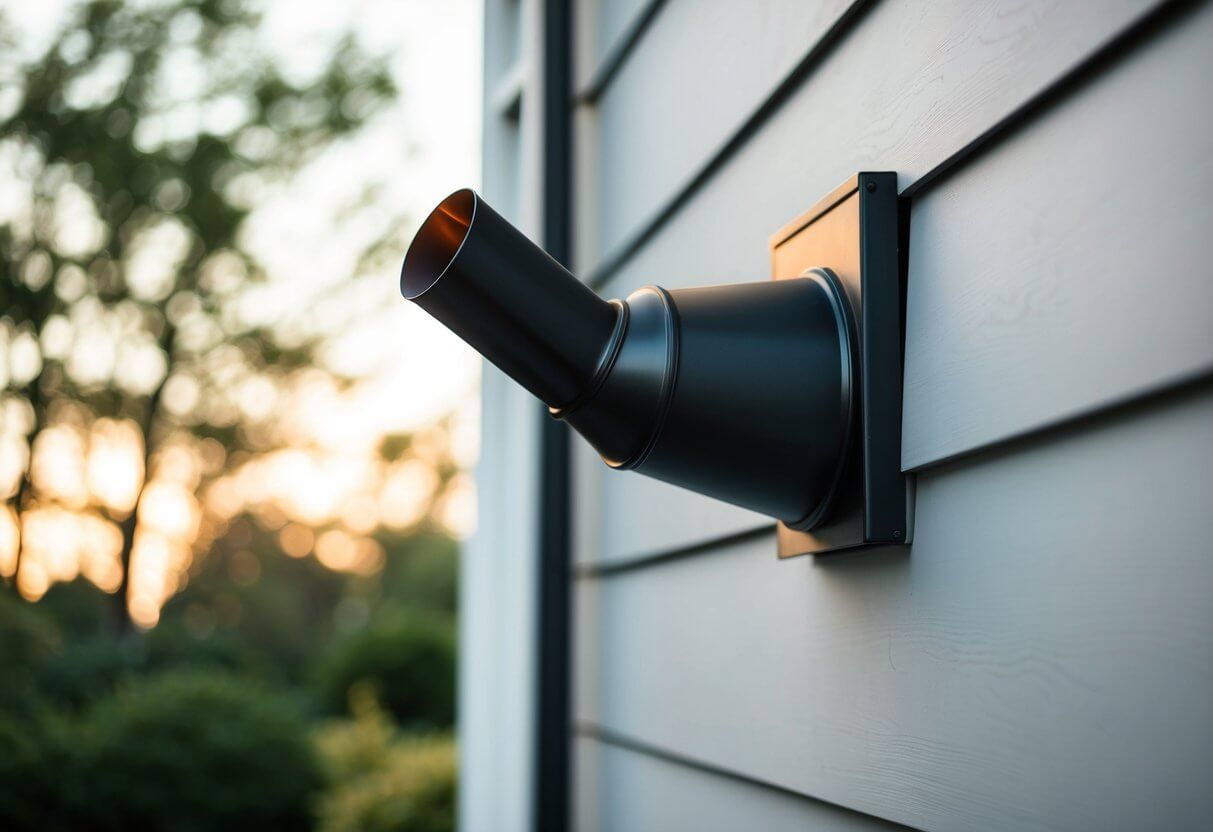
Maintaining proper safety and ventilation for gas fireplaces is crucial for preventing hazards and ensuring indoor air quality. The following sections detail the importance of ventilation, potential safety risks, and the critical measures to monitor carbon monoxide levels.
The Importance of Proper Ventilation
Proper ventilation is essential for gas fireplaces to function safely. It allows the efficient expulsion of combustion byproducts like carbon monoxide and water vapor. Without adequate ventilation, these harmful gases may accumulate indoors, posing serious health risks.
Gas fireplace venting options typically include:
- B-Vent Systems: These systems expel exhaust gases through a chimney and draw air from the house for combustion. They are less efficient but ensure safer operation.
- Direct Vent Systems: These systems pull air from outside for combustion and vent gases directly outside, minimizing indoor air quality issues.
Regular checks of the flue are necessary to ensure it is clear of obstructions. This helps maintain airflow, prevents the buildup of dangerous gases, and enhances the efficiency of the fireplace.
Safety Hazards and Preventions
Gas fireplaces can present safety hazards if not maintained correctly. Common hazards include improper venting, gas leaks, and carbon monoxide accumulation. Proper installation by professionals is essential to mitigate these risks.
To prevent safety hazards:
- Inspect the flue regularly for blockages or damage.
- Ensure there are no combustible materials near the fireplace.
- Use a certified technician for installation and maintenance.
Homeowners should remain vigilant in monitoring their gas fireplace systems. This includes checking for any unusual odors or changes in flame behavior, which may indicate underlying issues.
Carbon Monoxide and Detector Placement
Carbon monoxide (CO) is a colorless, odorless gas that can be lethal in high concentrations. Gas fireplaces, if improperly vented, can lead to CO buildup. Therefore, monitoring CO levels is critical.
The following tips should be considered for detector placement:
- Install CO detectors near sleeping areas and in common living spaces.
- Ensure detectors are at least 15 feet away from fuel-burning appliances.
- Test detectors monthly to ensure they are functioning properly.
Awareness and preparedness can significantly reduce risks associated with carbon monoxide. Regular maintenance and monitoring not only enhance safety but also improve the efficiency of gas fireplaces.
Maintenance and Inspection
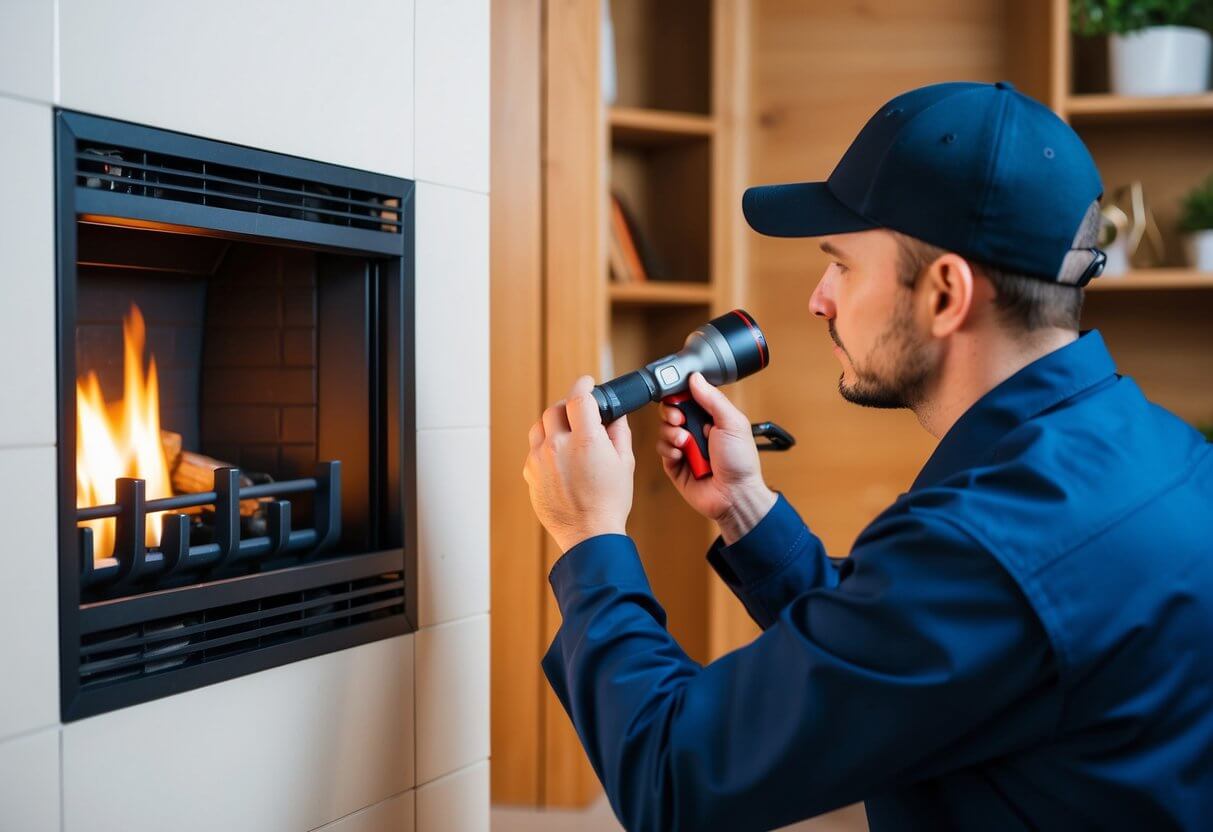
Regular maintenance and inspection of the gas fireplace flue are crucial for safety and efficiency. Proper care can prevent harmful gas leaks, improve air quality, and enhance the fireplace’s overall performance. Following the recommended guidelines helps maintain the integrity of the combustion system and reduces potential hazards.
Routine Cleaning and Maintenance
Routine maintenance of the flue involves periodic cleaning to remove any buildup that could obstruct airflow. Homeowners should check for creosote buildup, which can occur even in gas units due to combustion byproducts.
Steps for Routine Cleaning:
- Inspect the Damper: Ensure it’s operating correctly. A malfunctioning damper can lead to heat loss.
- Check for Obstructions: Look for any debris, such as leaves or birds’ nests, in the vent pipe or chimney cap.
- Clear Soot and Residue: Use a brush designed for flues to remove soot without damaging the lining.
Performing these tasks annually ensures the flue remains unobstructed and helps maintain air quality indoors.
Professional Inspection and Service
Having a professional conduct an inspection is essential for identifying hidden issues. A certified technician will assess the entire combustion system, including the flue’s integrity and any possible leaks.
Key Benefits of Professional Service:
- Safety Assurance: Detects potential hazards like gas leaks or blockages.
- Comprehensive Checks: Includes inspecting the vent pipe and chimney cap.
- Corrective Actions: A professional can perform repairs or cleaning as needed.
Routine professional inspections can help extend the life of a gas fireplace and improve efficiency, ensuring safe operation and preventing health risks associated with improper ventilation.
Enhancing Fireplace Efficiency
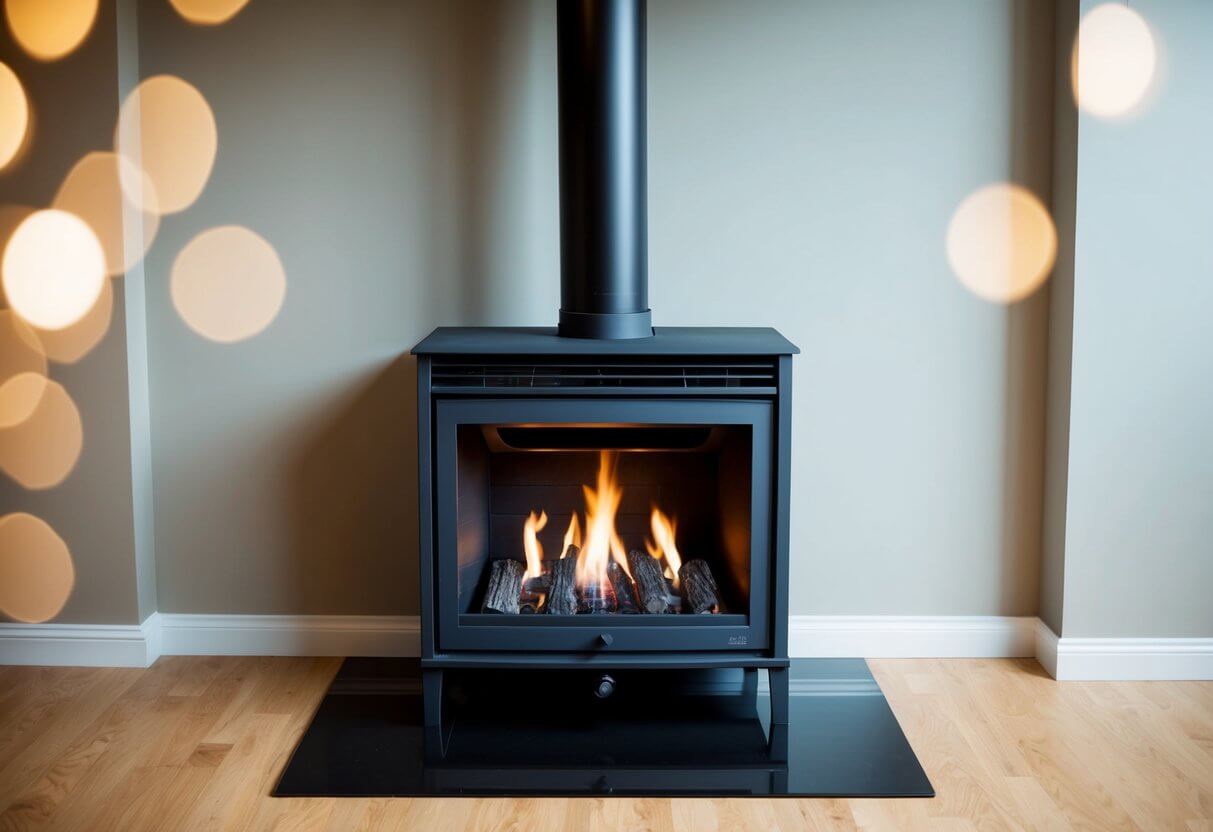
Effective fireplace efficiency enhances heat output while minimizing energy loss. Key considerations include the appropriate venting options, regular maintenance practices, and the installation of efficient fireplace inserts. By focusing on these aspects, homeowners can maximize their fireplace’s performance.
Choosing Venting Options
Selecting the correct venting option is crucial for maximizing fireplace efficiency. Two primary types of venting systems exist: direct vent and ventless.
- Direct vent gas fireplaces draw air from outside for combustion and expel exhaust gases outside, making them efficient with ratings typically between 70% and 85%.
- Ventless gas fireplaces do not require a chimney or flue, allowing up to 90% of generated heat to remain in the room. However, they must comply with safety regulations.
Homeowners should consider local codes, the size of the room, and heating needs when choosing a venting option.
Maintaining Optimal Heat Output
Regular maintenance of gas fireplaces is essential for optimal heat output and efficiency. This includes:
- Cleaning: Regularly clean the glass doors and firebox to remove soot and debris, which can obstruct heat.
- Inspection: Periodically inspect the venting system for blockages or leaks to ensure proper airflow.
- Gas Line Checks: Ensure that gas lines are inspected for leaks to maintain safety and efficiency.
By adhering to these practices, homeowners can prolong the lifespan of their fireplaces and ensure they operate at peak performance.
Fireplace Inserts and Accessories
Gas fireplace inserts can substantially increase heating efficiency. These inserts fit within existing fireplaces, providing a sealed environment for combustion. Key benefits include:
- Higher Efficiency Ratings: Many inserts achieve efficiency ratings over 80%.
- Reduced Heat Loss: Inserts minimize air exchange with the outside, trapping heat in the living space.
- Glass Doors: Installing glass doors can improve efficiency further by reducing heat escape and enhancing safety.
Choosing high-quality hearth products is essential for ensuring durable performance and maximizing heat distribution throughout the home.
Frequently Asked Questions
This section addresses common inquiries regarding gas fireplace flues, including how to identify their status, safety considerations, installation standards, and venting options. Readers can find clear and concise answers to enhance their understanding of gas fireplace systems.
How can you tell if the flue of a gas fireplace is open?
To determine if the flue is open, one can use a flashlight. Shining light up the chimney from below can help see if light is visible at the top. If it is not, the flue might be closed.
Should the flue be open or closed when using a gas fireplace?
The flue should be open during operation to ensure proper ventilation. An open flue allows safe combustion and prevents toxic gas buildup, which could pose severe health risks, including carbon monoxide poisoning.
What are the specific flue requirements for a gas fireplace installation?
Flue requirements vary based on the type of gas fireplace installed. Generally, they must meet local building codes and manufacturer specifications to ensure safety and efficiency. Proper sizing and venting configuration are crucial for optimal operation.
What are the venting options for gas fireplaces?
Gas fireplaces typically offer two main venting options: direct vent and B-vent. Direct vent systems draw air from outside for combustion and vent exhaust directly outside, while B-vent systems rely on natural draft and use indoor air for combustion.
How does venting a gas fireplace to the outside work?
Venting to the outside works by expelling combustion gases through a vent pipe. This system ensures that harmful gases are safely removed from the home while allowing fresh air to enter for efficient fuel combustion.
What are the differences between a vented and ventless gas fireplace?
Vented gas fireplaces require a flue or vent to expel exhaust, providing better air quality. Ventless models do not need a vent and can be installed in various locations, but they may release some emissions into the room, which can impact indoor air quality.

